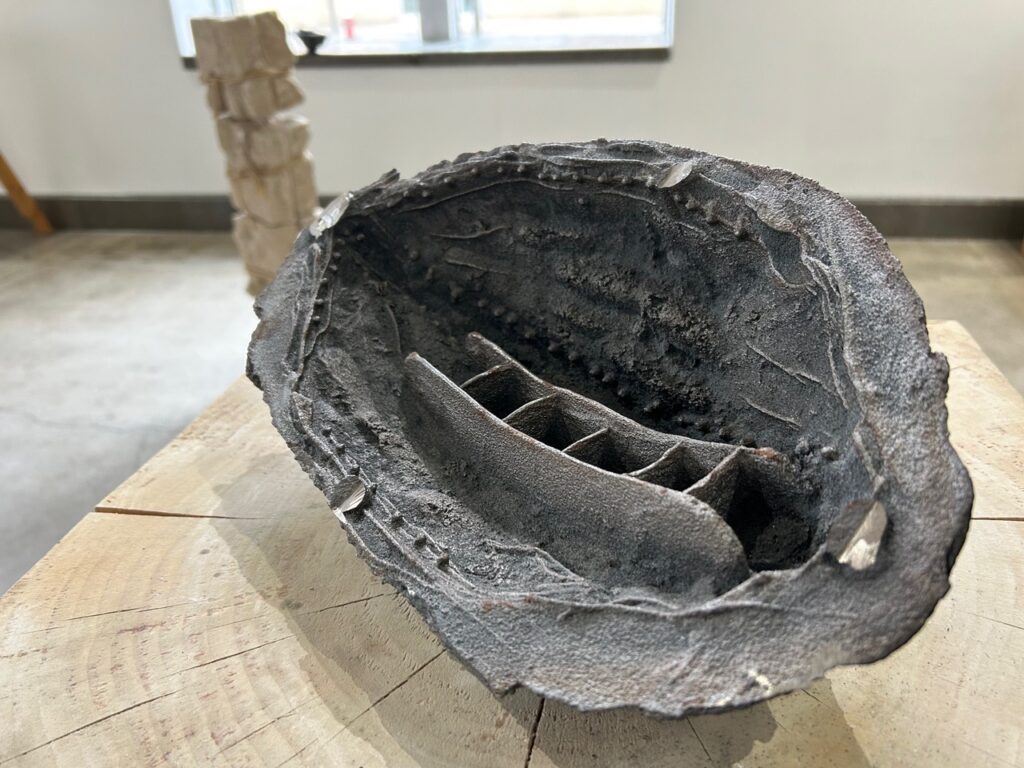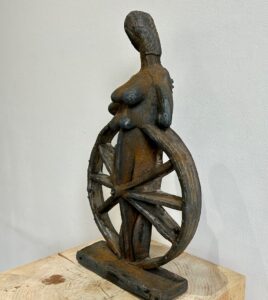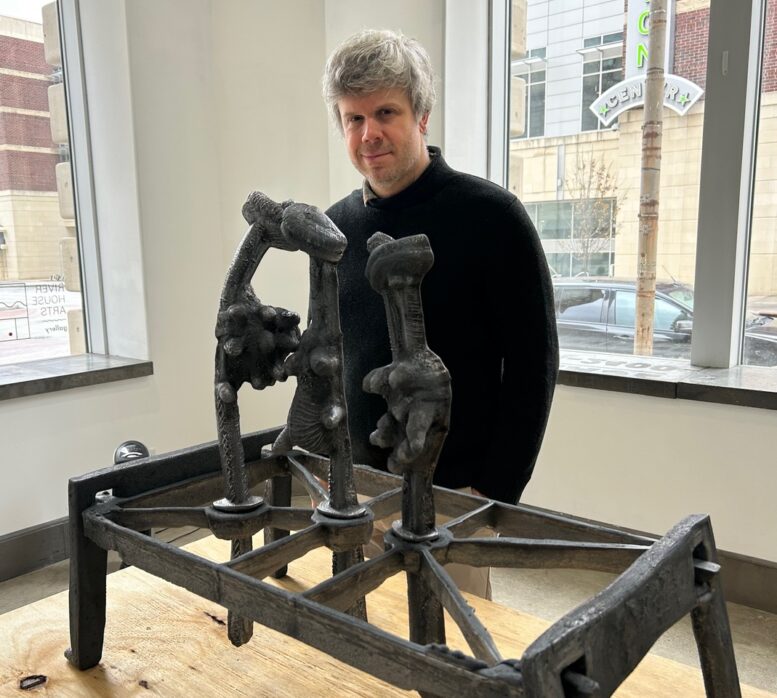By DAVID DUPONT
BG Independent News
A visitor walking into the exhibit “William Corwin: Things” at River House Arts in Toledo should be forgiven if on first glance they wonder: art or archeology?
The two dozen objects are redolent of ancient symbolism, and many look freshly dug from the ground. There are wheels, ladders, boats, and axes — each of which has acquired meaning and mysteries over the years.Yet, the exhibit for all its evocation of images dating back millennia represents the work that the New York City-based artist has created in the past decade. Some were freshly molded in Perrysburg as he was preparing for the show’s opening in December.
The exhibit is on view at the gallery at 425 Jefferson, Toledo, by appointment, through Jan. 25. Click to schedule an appointment or call 419-441-4025.
Corwin said he was casting some of the seven miniature mountains that are part of the show in Perrysburg where he was staying. Other pieces though are the product of a more elaborate process. He works at Rivers of Steel in Philadelphia. The metal he uses, he noted, comes from recycled brake pads courtesy of the State of Pennsylvania.

Under the watchful eyes of staff, Corwin does the molding. “I like that,” he said. “It’s lots fun to make one’s own molds. I have a lot of control over the texture.”
The work is influenced by his work as a journalist when he interviewed a number of archeologists. “I’ve always been interested in archeology.” They would talk about the objects they had unearthed.
Corwin is fascinated with how utilitarian objects take on symbolic meanings over the centuries. A tear-shaped ax was designed to cut meat and break bones, but comes to stand for the life made possible by the nourishment provided by that food. The ladder has come to represent the ascent and descent into and from higher realms, as in the Biblical story of Jacob’s ladder.

The wheel, Corwin said, has come to stand for humans ingenuity.
The exhibit also features several depictions of the goddess Artemis, who was honored in the past by the offering of bulls’ testicles. In the Renaissance, these became abstracted. Corwin’s goddess appears to have multiple breasts. “It’s amorphous to be sure.”
“She is not a beautiful goddess, but a dangerous one,” he said. That’s fitting in a time when nature aggravated by climate disruption is showing “it is not our friend.”
The forms are all simple, but the artist combines them, and their various symbols. Artemis is juxtaposed with a wheel; a ladder reposes inside a boat.
Corwin’s figures of boats were inspired by the movie “The Dig” starring Ralph Fiennes. It is a fictional depiction of the real life discovery of an ancient Anglo-Saxon boat. It contained treasures, but all that was left of the boat was the impression of its structure.
Corwin replicates the boat by digging in sand, making the design, and casting it in metal, reversing in a way the process by which the boat decayed.
Corwin, 48, didn’t start out as an artist. He studied architecture at Princeton. The program was tied to philosophy. This did not prepare him for the issues architects face, like where to put the urinals. “I realized after working in the field for a few tears that it was more about construction than sculpture.”
The New York City native switched to painting, and studied for two years at Columbia University before he “ran away” to London as an apprentice with painter Richard Patterson. To young Corwin, Patterson, who has since moved to Texas, was like a rock star.
He went on to apprentice with different artist. At the time he painted on plaster, and the work became more about the texture of the plaster.
That led to the casting. “It’s a liquid form that takes a shape that you give it then it solidifies,” he said. “That’s the thread of everything.”
Corwin’s work has been featured in a number of shows. “Things” has also been exhibited at the Geary Gallery in Millerton, NY.
He brought it to Toledo after meeting gallery founder Paula Baldoni at events in New York. He came to Toledo for Sculpture X in 2019 during which he spoke at BGSU.
The gallery was an ideal setting with its open space punctuated by “raw columns.” The works are displayed on rough wood from a saw mill nearby. This sets off the visceral roughness of the work through which the viewer engages the ancient meanings embedded in Corwin’s “things.”

